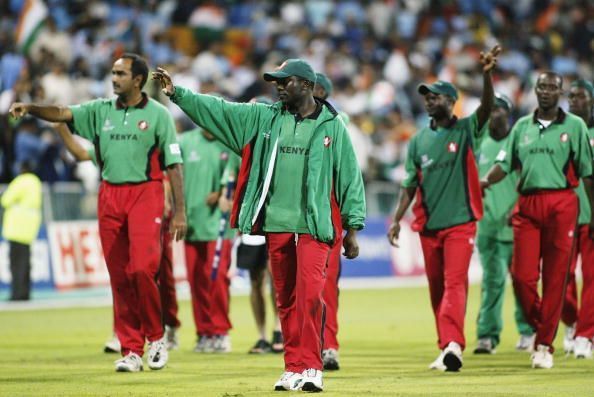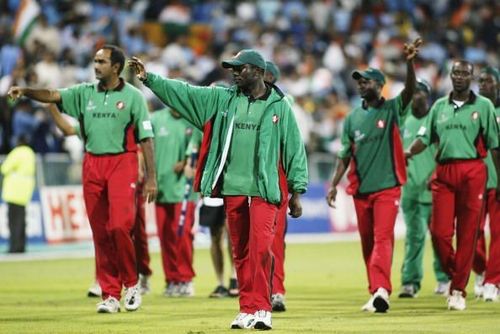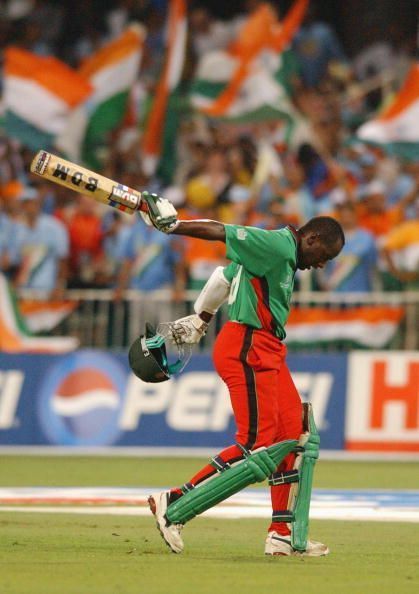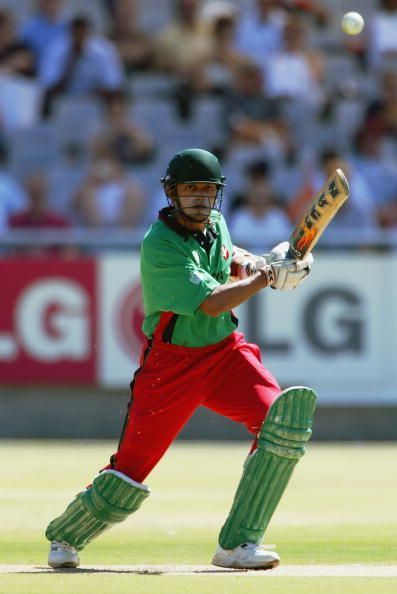
The capitulation of Kenyan cricket

The FIFA World Cup of 1990 witnessed one of the most romantic comeback stories in the history of global football. A 38-year-old Roger Milla came out of international retirement on the request of Cameroonian President Mr. Paul Biya. Thereafter, he led his team to unprecedented success in the showpiece event. Cameroon became the first African nation to qualify for the quarter-finals in the history of the tournament and Milla became a national hero and a continental icon overnight.
The closest equivalent of Cameroon and Milla in cricket is the rise of Kenyan cricket in the early 2000s. Fans who had followed international cricket during the late 90s and early 2000s are well versed with the spirited level of cricket the Kenyans played during that era. Much like Cameroon, they went on to become the first associate nation to reach the semi-finals of the ICC Cricket World Cup in 2003.
The question now is, what happened to Kenyan cricket after that? From being on the cusp of being granted Test status, why did they go on a downward spiral? This article investigates the probable reasons for the fall of Kenyan cricket, post their successful World Cup campaign.
Lack of domestic cricket infrastructure: Kenyan cricket even in its heydays was standing on a pretty weak foundation. There was never a broad base of domestic players from which the national team was chosen. This fact can be well portrayed by the number of cricketers hailing from the same family line in Kenya. The famous Steve Tikolo had his brother David play alongside him in the 1996 World Cup, whereas the elder son of the family, Tom Tikolo was an ex-captain of the national cricket team. Maurice Odumbe's elder brother, Edward represented Kenya for a brief period. Then, of course, there were Martin and Otieno from the Suji family and the famous Obuya family who managed to yield as many as three players of international calibre.
All these examples only point towards one direction: Cricket as a skillset succeeded for a brief period in Kenya because the game was effectively passed along the family line of a small group of people. Once that particular generation of cricketers retired, the lack of a strong domestic infrastructure cost the nation dearly.

Match fixing: A year after the World Cup of 2003, Maurice Odumbe got banned from international cricket owing to match-fixing allegations. For a country who has seen the majority of their cricketing success come from Odumbe, this incident came as a huge blow to their collective trust in the game. The cricketing fan base, which had gradually started to take interest in the game post their World Cup performance slowly scattered to other prominent Kenyan sports like athletics and the Kenyan cricketing dream got nipped at the bud.
Poor injury management: Ravindu Shah was the most gifted stroke maker in the Kenyan cricket team in the early 2000s. In his first four ODIs, he scored three fifties. One of those half-centuries came against a full-strength South African bowling attack, comprising of Shaun Pollock, Allan Donald, Makhaya Ntini and Jacques Kallis.
He carried his impeccable form into the World Cup, where he scored a solid 46 against India and a graceful half-century against the mighty Aussies. At a time when he started being regarded as the best batsman in associate cricket, he suddenly lost his way. A minor knee injury ultimately aggravated to a career-threatening series of injuries, which kept him out of the national team for the next four years. Lack of well-trained physios and the dearth of proper 'Centres of Excellence' in the country meant that the talented opener was left all by himself to manage his injury. This resulted in him staying out of the game in his peak years.

Mismanagement of the Kenyan Cricket Board: Most of the cricketing legends of Kenya; Ravindu Shah, Asif Karim, Hitesh Modi, Maurice Odumbe and even Steve Tikolo developed their game at the Nairobi Cricket Club. In the late 90s, the Kenyan Cricket Board made a conscious effort to bring eminent Test players like Sanjay Manjrekar, Kiran More and Sandeep Patil to Nairobi. The purpose was to guide the developing talents of Kenyan cricket in the right direction.
However, in the early 2000s, the cricket board poured all its funds to uplift the facilities of the Nairobi cricket stadium to organize the ICC Knockout Trophy (now known as ICC Champions Trophy) in Kenya. They succeeded in hosting the multi-nation tournament but this marked the beginning of a major change in policies of the Kenyan Cricket Board. Post the ICC tournament, the focus of the board shifted from strengthening the domestic cricket structure in Kenya to organising major multi-nation tournaments in the country.
Such short-sightedness in decision making resulted in corruption within the administration of the cricket board. As a consequence in 2004, a mass exodus happened in Kenyan cricket led by Steve Tikolo citing biasness and fraudulence in the operation of the board. This resulted in further deterioration of the cricket culture in the African Nation.
A cricketing nation on the verge of gaining test status only two decades ago proved to be the victim of inconsequential decision-making by the country's cricket administration. From being regarded as the best team among associates, Kenya went on an uncontrolled downward slide, to lose its ODI status in 2014 and then being relegated to ICC Division 3 in 2018. Standing in 2019, they are on the cusp of facing further ignominy owing to political intervention causing administrative incoherence in the cricket board.